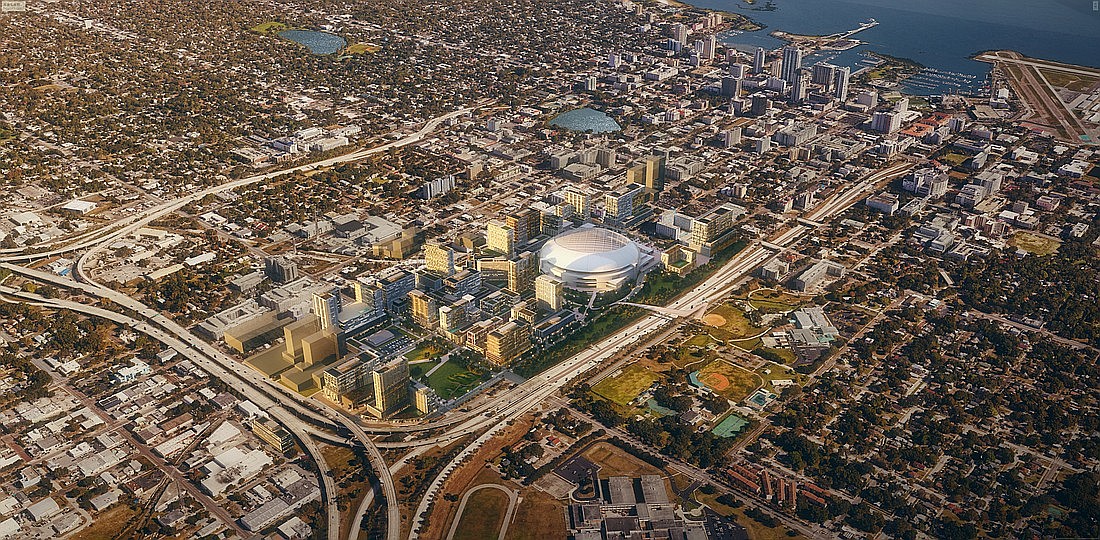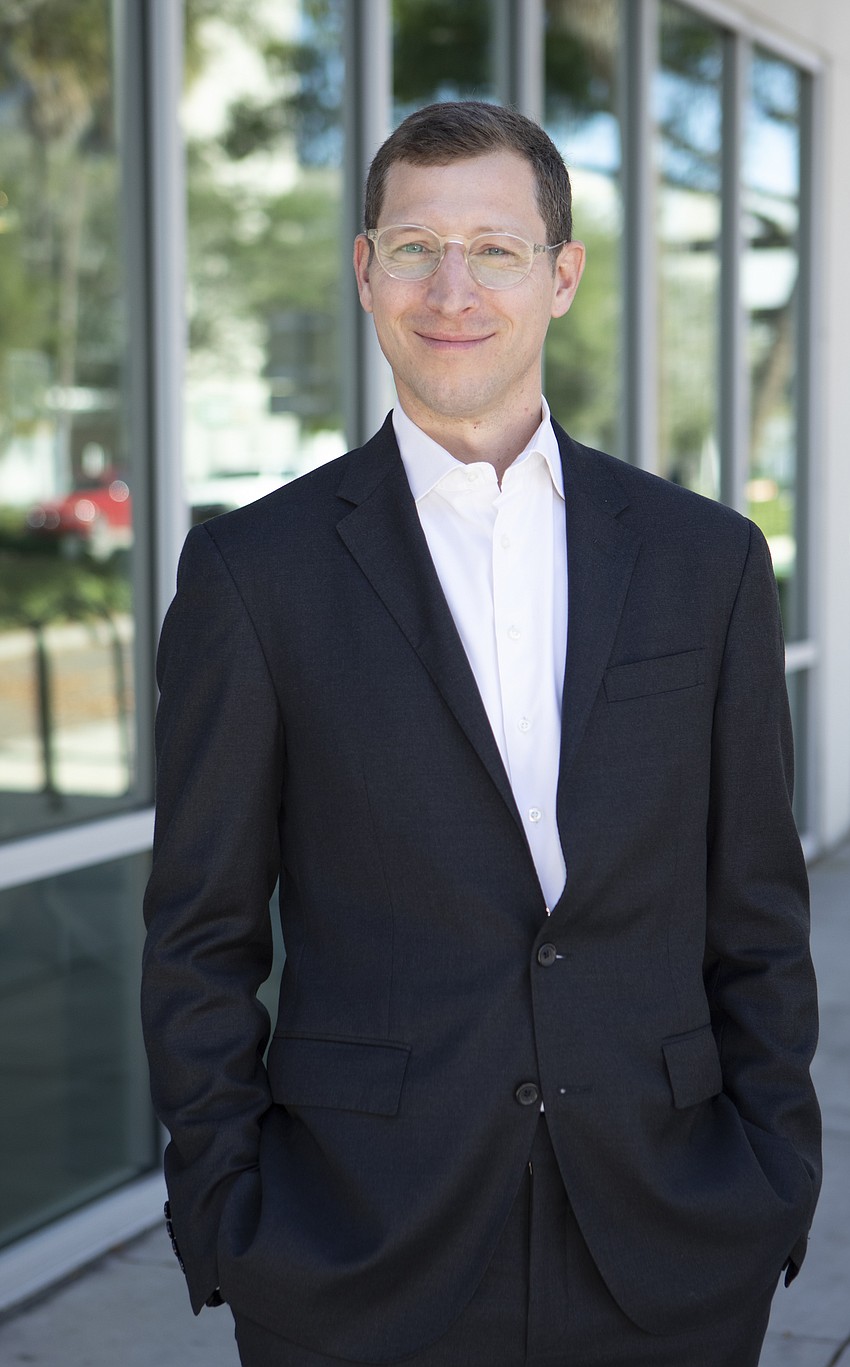- January 17, 2025
-
-
Loading

Loading

According to Will Ferrell titular character in “Talladega Nights: The Ballad of Ricky Bobby,” “If you ain't first, you’re last.”
Denise Young, however, disagrees.
“Never underestimate the power of positioning yourself to be No. 2,” she says.
Young wears several hats: She’s the business development manager at Tampa-based Turner Construction Co. and founded her own consultancy, Young BD Group LLC, which caters to the architecture, engineering and construction sector. Most recently, however, she was a key member of Sugar Hill Community Partners, one of four groups that submitted a bid to redevelop the 86-acre Tropicana Field site in downtown St. Petersburg. That's a swath of land that had been home to the Gas Plant District, a thriving Black community, before it was razed to make way for the baseball stadium where the Tampa Bay Rays play home games.
St. Pete Mayor Ken Welch ultimately chose a plan for the site submitted by the Rays and their development partner, Houston-based Hines. Sugar Hill was widely regarded as the other finalist for the project, over the other two entities that didn't win the bid.
“Big stuff is risky,” Young says. “You just have to roll with it.”
Young and her colleagues have done much more than that. They are using their unsuccessful Tropicana Field bid experience as a springboard for collaboration already taking place and will only increase in the future as the entities that made up Sugar Hill Community Partners leverage the connections they made with each other and the St. Pete community. They agreed to speak with the Business Observer about not only lessons they’ve learned from the two and a half years they spent crafting their proposal, but also how barely missing out on a big win can propel them to greater heights.
Tarnisha Cliatt, director of community relations and diversity coordinator at DuCon Construction, which has offices in Sarasota and Tampa and is another member of the Sugar Hill team, says her company has already seized an opportunity that’s a direct result of the grassroots engagement that occurred during the crafting of the Gas Plant District proposal.
“We’re in the building phase of the Shell Dash project, 12 attainable townhomes that are being built along the corridor of the Deuces, and that’s something that came directly out of our relationships that were made through our efforts at community engagement,” she says. (The Deuces is a neighborhood in South St. Petersburg.) “Not only that, but we’ve been able to do other jobs for local community members. We were able to jump right in and form those relationships, because they trusted us enough to get the work done. We are able to do more work in Pinellas County, which is something that we hadn’t done prior to the Gas Plant proposal.”
Brett Sherman, a New York-based principal at construction engineering and consulting firm Stantec, was one of the non-local members of the Sugar Hill team. He says the sincerity of the group’s proposal “brought others to look to us to execute on opportunities that meet community needs elsewhere in St. Pete and Pinellas County. Potential clients saw what we were able to do and saw the vision that we had for community-driven development.”
After we had the understanding of what the decision was, we had to pivot. That's what construction does, and that’s what life teaches us." –Linda Porter, business development manager at VoltAir Inc.
One example? Clearwater Bluffs. The project will bring much-needed housing, retail and a hotel to city-owned land in downtown Clearwater, which has seen its development stunted in recent years by the Church of Scientology and its aggressive acquisition of commercial real estate in the area. Stantec is involved with that project, along with another Sugar Hill member, Jordan Behar of St. Pete-based Behar Peteranecz Architecture.
“From a design standpoint, we learned an immense amount,” Behar says, adding Sugar Hill was unique among the four bidders because it was the only holdover from the first Gas Plant District RFP process that played out during former Mayor Rick Kriseman’s second term. “We knew there were things we could significantly improve upon with our understanding and knowledge of how the urban fabric of St. Pete works and how to integrate into it. We had a good first presentation, but we felt like we could come back stronger and take it to a whole other level.”

Prior to leaving office in 2021, Kriseman selected Miami-based Midtown Development to handle the Gas Plant District project. Sugar Hill was the other finalist. But a few months later, Welch, who never committed to honoring Kriseman’s pick, decided to restart the RFP process from scratch. That prompted Midtown to back out entirely with a tersely worded statement.
Sugar Hill, meanwhile, plowed ahead with a revised proposal to meet Welch’s new requirements. Behar and his colleagues viewed it as an opportunity to build on the hard work they’d already done and solidify their group as the frontrunner.
“To have that much time put into the process allowed us to go so deep into our own thoughts, into the community and into how the city operates as opposed to having two to three months, which is what the other teams had in the second go-around,” Behar says. “It was an opportunity to take everything we learned and take another pass at it and see how much better we could make it, and I think we were significantly more successful in our second go-around. Not that we weren't proud of the first proposal, but the second round was incredibly deep.”
While there’s no way to sugarcoat the disappointment of losing out on a project after two and a half years of hard work, Sugar Hill team members are seasoned pros and know how to maintain their perspective when it comes to business wins and losses.
“Obviously, it was something that none of us wanted to hear,” says Linda Porter, business development manager at VoltAir Inc., a provider of engineering design services that was part of the Sugar Hill group. “But after we had the understanding of what the decision was, we had to pivot. That's what construction does, and that’s what life teaches us. But with that, we put our boots back and continue to do the work. We’re in pursuit of other projects. We’re consistently making sure that we have work in our pipeline.”
Sherman, with Stantec, stresses that experience, no matter the result, is always the best teacher and Sugar Hill’s participation in the Tropicana Field redevelopment process will arm its members with vital knowledge that will only help them improve their chances of winning other big projects in the future.
“I would submit that everybody on the team is proud of everything we put together,” he says. “I doubt anyone regrets participating in the process because of the relationships we were able to build, many of which have turned into friendships. Life’s too short not to work with good people. And I’m sure everyone, institutionally and individually, has learned something from the process. At the end of the day, you’re smarter, more informed and better prepared for the next opportunity.”
Thomas Huggins III, president of Ariel Business Group, which specializes in diversity, inclusion and community engagement services for developers, contractors and government agencies, has a unique take on his experience as part of the Sugar Hill group. He moved to South St. Pete in the early 1980s and watched as the Gas Plant District was paved over, displacing hundreds of people and dozens of businesses, and even churches. Helping to plan the future of the Tropicana Field site, he says, was an “historic” opportunity to steer a major city toward what he calls a “transitional inclusion” process.
“St. Petersburg is unique in terms of having this large piece of land,” he says, “but it’s not unique in the sense that there are communities throughout the country that are going through various transitions like this. We’ve learned a lot about how you can influence communities, help build and help transition communities throughout this country.”